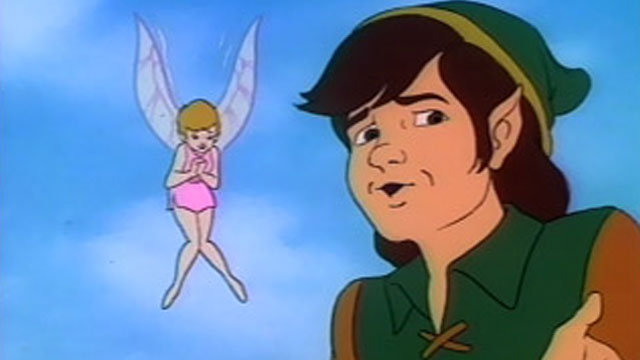
Legend tells of a time long ago, when Nintendo tried to use its popularity in the video game market to jump start a block of animated shows featuring its key mascots. Some gamers remember this era with a nostalgic fondness, but it was a short lived experiment for a reason. Captain N made it to three (two-and-a-half, really) seasons but the Super Mario Bros. Super Show only lasted one. The Super Show was effectively made up of three parts: an animated Mario section, a live action Mario section, and a 15 minute block entitled the Legend of Zelda. While the Mario bits were largely innocent, stupid pieces of mind-numbing eye candy for the kiddies, The Legend of Zelda was quite possibly one of the greatest abominations ever to curse the video gaming world. Everything that made Zelda great was thrown out the window and replaced by unfathomably insipid takes on the cornerstones of the franchise.
Regardless of this atrocious blunder, turning Zelda into a cartoon is not all that bad an idea; the games possesses all the hallmarks of a great adventure series. What follows is a list of what went wrong with the original Zelda series, and how to turn it all around to create a stellar series.
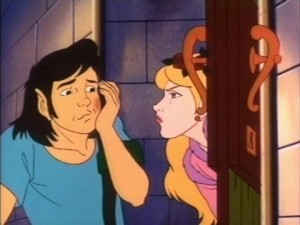 Link
Link
The 1989 series portrayed our hero as a loud mouthed, selfish braggart obsessed with nothing more than getting a kiss from Zelda; overall he is pretty damn petty. He got the job done, but he was impossible to like. In the games, Link has been a silent protagonist, and while TV pretty much requires him to talk, he should at least be soft spoken and a man of few words. His confidence and bravery should be communicated through his actions and expressions, something the games have done masterfully since the transition to 3D. Link is ultimately simple; he is a courageous hero who comes from humble beginnings to become Hyrule’s powerful savior.
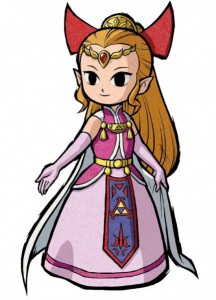 Zelda
Zelda
The princess was actually the best thing about the old cartoon. She did get kidnapped from time to time, but she mostly fought alongside Link and was his equal in combat and superior in intellect. Seriously, Zelda should have been the hero. Of course most of the games present Zelda as more of a damsel in distress, but she has always been wise and proven herself capable of throwing down the gauntlet every now and again. If anything, a new cartoon should go the Ocarina route and bring in Sheik but with an expanded role; let her fight side-by-side with Link, instead of just teaching him songs and looking cool.
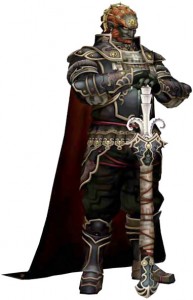 Ganon
Ganon
The modern image of Ganon as an armor clad, Gerudo King wasn’t introduced until Ocarina of Time, so the ’89 cartoon uses the previous, pig-like wizard approach to the villain. The result is far from threatening, and his high pitched voice just makes him all the more comical. Worst of all were his plans, which were occasionally clever but were also always impractical and unambitious. Every episode he came up with a crackpot scheme to get the Triforce of Wisdom from Link and Zelda. He then easily gets foiled but succeeds in living to try another day; at least he was tenacious. The Ganon we know is a much more imposing character with considerable powers and is a masterful tactician capable of employing magic, trickery, and brute force in equal measure. In a newer, better cartoon he would be hard to mess up. Just make him a dangerous, power hungry despot and make sure he transforms into his trademark bestial form during the final battle.
The Fairy/Talking Boat/Twilight Princess
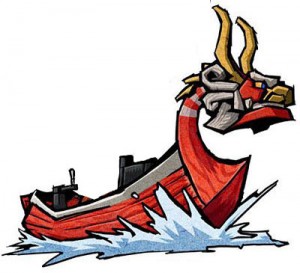 The fish-out-of-water framework works so well with stories set in fantastical settings because it sets up a natural way for the reader/player/viewer to learn the setting along with the protagonist; since both are new to the world, some sort of guide or mentor is frequently introduced as a literary tool. Ocarina of Time had Navi, Wind Waker had the King of Red Lions, and Twilight Princess had Midna. Sure, other characters, like the Deku Tree, contribute to this process, but this is the reason why Nintendo has included the aforementioned characters and others like them in most games in the series. This sort of character would also serve another purpose in the new cartoon, because Link wouldn’t talk much, the guide would get to pick up some of the narrative slack and maybe throw in a bit of comic relief every now and again.
The fish-out-of-water framework works so well with stories set in fantastical settings because it sets up a natural way for the reader/player/viewer to learn the setting along with the protagonist; since both are new to the world, some sort of guide or mentor is frequently introduced as a literary tool. Ocarina of Time had Navi, Wind Waker had the King of Red Lions, and Twilight Princess had Midna. Sure, other characters, like the Deku Tree, contribute to this process, but this is the reason why Nintendo has included the aforementioned characters and others like them in most games in the series. This sort of character would also serve another purpose in the new cartoon, because Link wouldn’t talk much, the guide would get to pick up some of the narrative slack and maybe throw in a bit of comic relief every now and again.
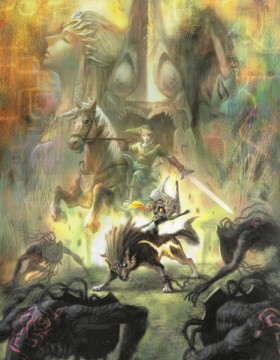
The Story
The old cartoon offered nothing more than brief attempts by Ganon to steal the Triforce and/or Zelda, often set against some kind of special theme which ranged from the sensible, like a magic competition, to the trite, like spring cleaning. Any new show would have to employ a grander, over-arching story covering Link’s first steps into the life of a hero, all the way up to his final showdown against Ganon: a simple enough story of good versus evil, filled with time-tested archetypes. This would be best accomplished by going with a route frequently used by anime and is becoming more common here in the America with shows like Lost; begin the show with a planned beginning, middle, and end right from the start. Episodic content might be the trend in gaming, but tightly planned narratives going throughout a show’s run (with a planned end point) allow television producers to create better stories that don’t overstay their welcome and jump the shark.
Hyrule
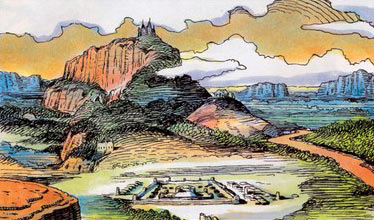 The ’89 cartoon would have you believe Hyrule consisted of nothing more than the Castle, a few lakes, villages, and forests within shouting distance of the castle, and Ganon’s underground lair. The new cartoon would benefit from taking advantage of the games’ vast and diverse landscapes. From the peak of Death Mountain to the vast expanses of the Gerudo Desert, Hyrule is an epic place. Also, the old Hyrule had a dull populace outside of the main cast and a few ancillary characters. They occasionally walked around in the background but that was about it. The modern show would look more like a thriving civilization, with lively towns, unique cultures, and an organized military just waiting to be squashed by Ganon’s evil might!
The ’89 cartoon would have you believe Hyrule consisted of nothing more than the Castle, a few lakes, villages, and forests within shouting distance of the castle, and Ganon’s underground lair. The new cartoon would benefit from taking advantage of the games’ vast and diverse landscapes. From the peak of Death Mountain to the vast expanses of the Gerudo Desert, Hyrule is an epic place. Also, the old Hyrule had a dull populace outside of the main cast and a few ancillary characters. They occasionally walked around in the background but that was about it. The modern show would look more like a thriving civilization, with lively towns, unique cultures, and an organized military just waiting to be squashed by Ganon’s evil might!
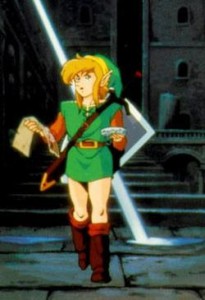 The Dungeons
The Dungeons
One of the franchises trademark’s would probably be the hardest thing to get right on film, which is probably why the original cartoon never really tried. The dungeons in Zelda games perfectly balance combat with puzzle solving, the latter of which is damn hard to make into entertaining television. The fights would no doubt be awesome, especially the battles with sword wielding foes like Stalfos and Darknuts, but making block pushing into good viewing is another matter. If anything, these aspects should be handled by focusing on more acrobatic feats and, believe it or not, intellectual challenges. Shows like House have proven that plenty of people like watching their heroes overcoming challenges of the mind just as much as they enjoy seeing physical challenges trumped. Link of course should also become a vicodin addict, walk with a cane, and be followed around by a culturally diverse group of underlings who must do his every bidding and endure his sardonic wit.
There are probably more pieces to this puzzle, but for now this should be a pretty good start. Really, the main thing to remember is that this isn’t a kids show, much the same way the games aren’t kids’ games. Zelda has always been part of an ageless literary tradition that stretches from the Epic of Gilgamesh up through Star Wars and Harry Potter, a classic framework that has always appealed to some part of the human condition. Turning Zelda into a great cartoon involves little more than embracing this while throwing in all the little nuances that make the franchise a timeless classic in its own right.




 ShareThis
ShareThis







Your hypothetical has merit, surely, but I think that you’ve rated the original cartoon unfairly; that is, I feel that you experienced the cartoon after you had played through several Zelda games.
What I’m saying is that many of the features you mention did not exist at the time (1989), and that a lot of things you discredit as breaking canon were… well, there was no foundation to build upon in the first place. What the 1989 cartoons did was give character to otherwise flat, story-less games; the first Zelda simply involves collecting several McGuffin Triforce pieces before fighting a pig-creature named Ganon and rescuing a princess, while Mario was about clearing stages and also rescuing a princess. There wasn’t a canon to break at the time; now, with the advanced stories that are offered by the more recent games, the cartoon does seem ridiculous, but then you are judging the cartoon out of its historical context.
I do agree that a new Zelda with what you’ve mentioned would be bad ass; I do not agree that the old cartoon was bad for the reasons you’ve listed.
Regardless, it was largely a marketing scheme to get the idea of the game out there to people.